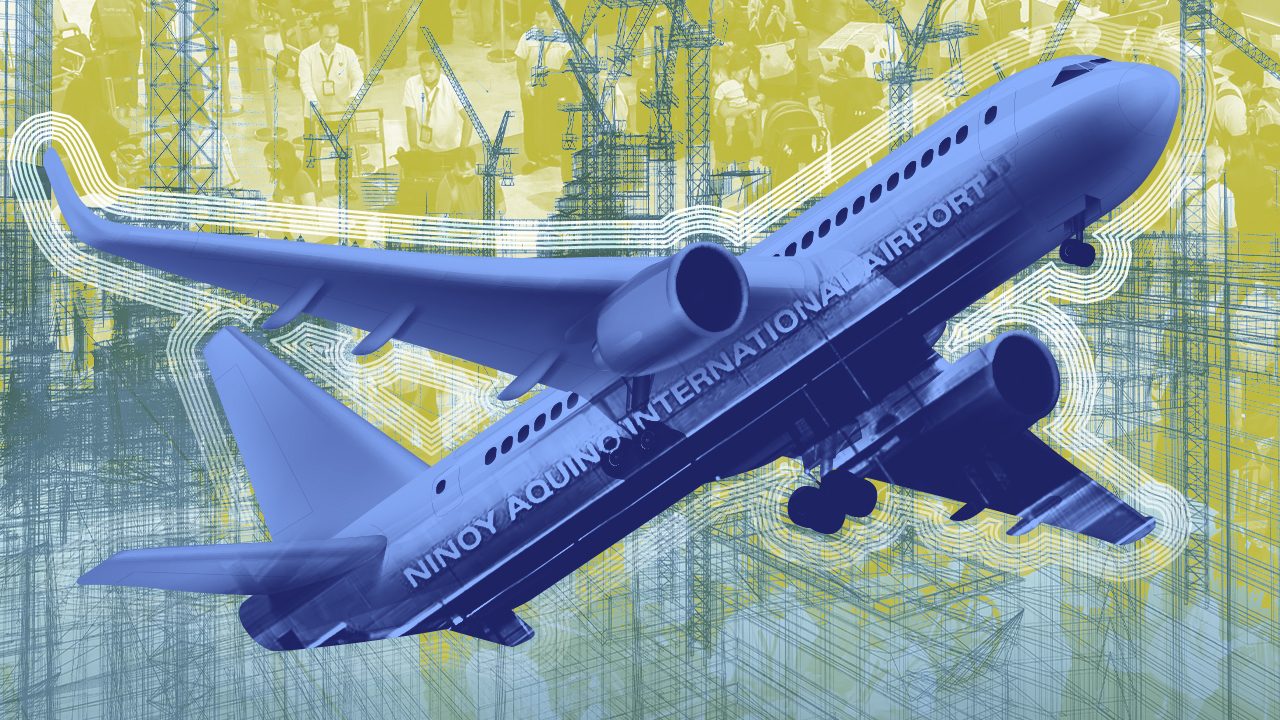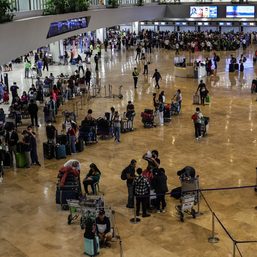SUMMARY
This is AI generated summarization, which may have errors. For context, always refer to the full article.

MANILA, Philippines – By February 15, the government will select a new private operator for the Ninoy Aquino International Airport (NAIA) among four mega-consortiums battling for the lucrative contract to rehabilitate the ailing international gateway.
Four groups, made up of some of the biggest local conglomerates and international operators, are officially bidding for the P170.6-billion airport project. These include:
- Manila International Airport Consortium – Aboitiz InfraCapital, AC Infrastructure, Asia’s Emerging Dragon Corporation, Alliance Global-InfraCorp Development, Filinvest Development Corporation, JG Summit Infrastructure Holdings Corporation, and Global Infrastructure Partners
- Asian Airport Consortium – Asian Infrastructure and Management, Cosco Capital, Philippine Skylanders International, PT Angkasa Pura
- GMR Airports Consortium – GMR Airports International, Cavitex Holdings, House of Investments
- SMC SAP and Company Consortium – San Miguel Holdings, RMM Asian Logistics, RLW Aviation Development, Incheon International Airport Corporation
This comes after the government stuck to its December 27, 2023, bid submission date despite some potential bidders requesting for an extension.
Now, Department of Transportation (DOTr) Secretary Jaime Bautista is confident that the government can pick a winning bidder among the four by next month despite NAIA’s history of delayed and derailed rehabilitation plans.
“Tayo, talagang pinag-aralan nang mabuti natin. Ayaw natin ng delay. Gusto natin mabilis (We really studied this well. We don’t want delays. We want things fast),” Bautista told reporters on Friday, January 5.
How will the government determine who wins?
The DOTr targets to open the bidders’ technical proposals by January 15 and complete the evaluation of these proposals by February 4. This will then be followed by the opening of their financial proposals, the details of which will determine who wins the project.
Bautista said that the “most important” factor for the basis of the award would be how much of NAIA’s revenue an operator is willing to share with the government. In other words, once bidders make it to the last stage of the bidding process, the one that proposes the best gross revenue-sharing terms will win.
By February 14, the DOTr will announce the result of the financial evaluation, with the notice of award to be issued on February 15. The winning bidder will sign the contract between the government and private sector on March 15.
By rejecting a previous unsolicited proposal and opting for this bidding process, the DOTr hopes to maximize “competitive tension” to earn the most favorable terms for the government, according to Transportation Undersecretary for Planning and Project Development TJ Batan.
What does the project cover?
Under the concession agreement, the Philippines’ ailing main airport will be handed over to the private operator for up to 25 years. The operator will be required to “rehabilitate, operate, optimize, and maintain” the airport, which includes improvements to its runways, four terminals, and other facilities. (READ: Bidding for NAIA rehab, privatization begins. Here’s what it covers.)
While making a return on their investment, the private operator must also abide by the revenue-sharing scheme agreed to with the government, on top of an upfront payment of P30 billion and a fixed annual payment of P2 billion to the Manila International Airport Authority (MIAA).
The government originally planned for the winning bidder to begin operations by September 11, although Bautista said that the turnover could happen even earlier, depending on how quickly they can complete the financial closing. This process includes the transfer of current airport employees and assets to the new private operator.
“We’re looking at, siguro, mga (around) 3 to 6 months. Kung magagawa natin ng three months, gagawin natin ng three months (If we can do it in three months, we’ll do it in three months). Ang target ko (My target is), I want it done not later than 6 months after the award,” Bautista said.
The transportation secretary also promised no immediate job losses would happen once the private operator takes over the airport.
“Either you stay with the MIAA as a regulator or you stay with the private sector as an operator. So, mamimili (they’ll have to choose). Depende sa trabaho, pero lahat (It depends on their job, but everyone) will be given an offer,” he said.
However, these job offers will not necessarily be for permanent positions right away as it would depend on whether or not “they can keep up with the requirements of the private sector,” Bautista said. – Rappler.com
Add a comment
How does this make you feel?





There are no comments yet. Add your comment to start the conversation.